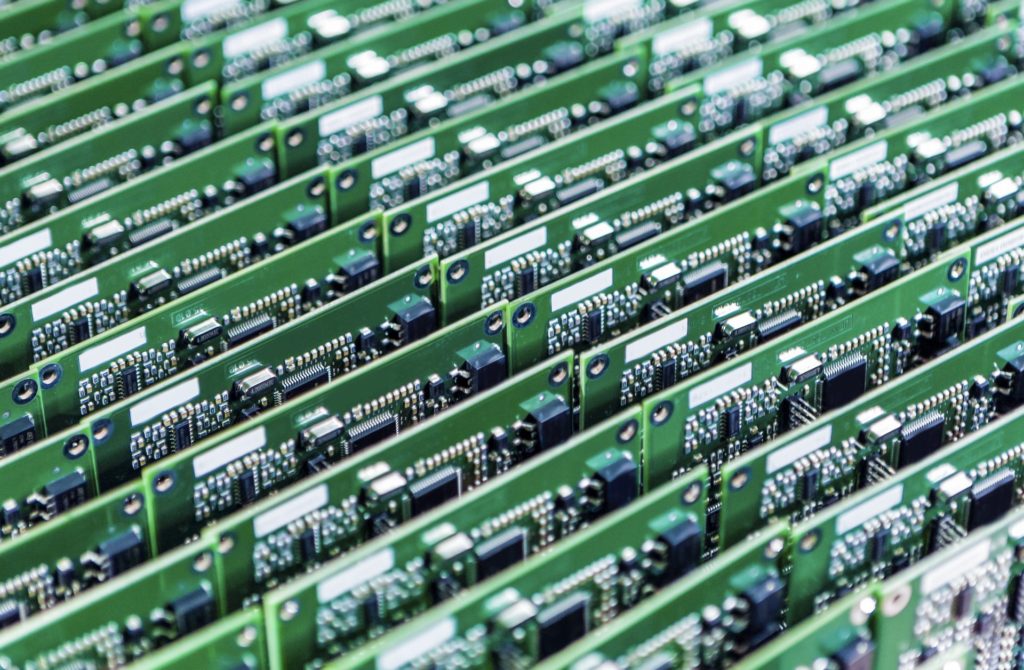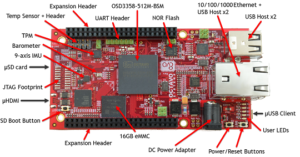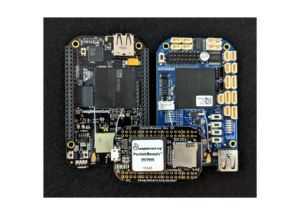
Gene Frantz
Posted on September, 5, 2019
Categories
Recent Posts
- Octavo Systems Unveils the OSD32MP2 Series: Revolutionizing System Design in the Electronics Industry April 9, 2024
- Securing the Future: The Integral Role of SiP Technology in Thwarting Physical Attack Vectors in Embedded Systems March 12, 2024
- Developing Secure Embedded Systems: Best Practices and Strategies March 12, 2024
- Heterogeneous Integration (HI) and System-in-Package (SiP) Technology: A Comprehensive Overview February 20, 2024
- Understanding The Differences Between System-on-Chip (SoC), Package-on-Package (PoP), System-on-Module (SoM), and System-in-Package (SiP) January 17, 2024
Insights to Consider When Ramping into Production
Surprisingly the hardest part of creating a new product is taking a working prototype and ramping into production. It is more complex than the architecture of the system, the hardware and software design, creating a working prototype, or taking the system through certification/qualification. The reason is simple; production requires discipline, logistics, and manufacturing at large volumes, where simple mistakes can be very expensive.
Smoothly ramping a new product into production is always the goal but seldom the reality. While it may be convenient to start thinking about production once the prototype is working, this will lead to many headaches. Successfully ramping into production starts its journey very early in the process. That means it requires paying attention to the details all the way through the process, starting with the system architecture. One thing we have learned by taking many products into production:
“Just because you can build 1 doesn’t mean you can build 10. Just because you can build 10 doesn’t mean you can build 100. And this continues with each order of magnitude.”
This paper discusses some of the insights an aids that we at Octavo have learned over the years to help you minimize the issues as you design and ramp your product into production.
When does the ramping to production begin?
Ramping to production starts with a good architecture and design. This means choosing components that will enable success as you ramp to production. Our stated mission at Octavo Systems is
“to simplify the design and manufacturing of electronic systems by delivering innovative high quality System in Package (SiP) solutions.”
System-in-Package integrates many different components into a single easy to use packaged device. This not only saves on design time but also helps solve many production issues such as sourcing and manufacturing costs.
While System-in-Package reduces or removes many of these issues there are still typically many other components in a design and the following needs to be considered.
- Check the Distribution Channel: If a component is not available from a major distributor or direct from the manufacturer, it doesn’t really exist because you will never be able to get it in volume.
- Plan for Longevity: Using a component designed for a fast moving market, such as cell phones, can be problematic since it might not be around as you ramp to production.
- Check the Life Cycle: Verify that products and guarantees from the manufacturer on product life meet your production needs. Not Recommended for New Designs (NRND) exists for a reason.
Beyond sourcing components, there are a number of other things to consider that will ease the transition from prototype to production device.
What else to consider to ease your ramp to production?
Using our years of experience bringing products to market, we at Octavo have brainstormed and come up with some other things to think about before moving from prototype to production that will make the journey easier. While this list should not be considered comprehensive, it will hopefully provide a good starting point.
Create a Robust Design
- Use standard PCB design rules
- Make sure there are multiple PCB manufacturing and assembly houses that can build your design within your cost targets.
- While there are always size / layout constraints on a design, remember the more custom / exotic the design rules, such a blind / buried vias, extremely small trace / space routing rules, or a large number of layers, the fewer suppliers will be able to manufacture the design, and the more expensive the design will be. Using System in Package will reduce these requirements, lowering your manufacturing cost.
- Design with FCC/CE certification in mind
- Every trace can be an antenna. Every output of a component can be a transmitter.
- Start FCC/CE certification early so there are no unexpected issues.
- Use a industry standard design process to ensure both hardware and software are robust
- Use development kits to prototype the design before creating a PCB
- Choose development boards that are open hardware (i.e. you can see schematics and layout) and ones where you can easily source the main components. Some examples:

- OSD3358-SM-RED
Reference, Evaluation, Development Board for the OSD335x Families of SiP Products
- OSD3358-SM-RED
- Choose development boards that are open hardware (i.e. you can see schematics and layout) and ones where you can easily source the main components. Some examples:
- The boards from BeagleBoard.org®, a customer of Octavo Systems, are excellent examples of using the OSD335x SiP in a design. More information is available at https://octavosystems.com/beagleboard/
- REMEMBER: Don’t wait to start prototyping your software until the final production devices are available.
Expect at least one or two revisions of the PCB before your final design
- Build enough of each revision that you can properly debug / test the design (typically around 5 to 10 boards)
- Do some small batch builds using the final set of components
- Start with five to ten
- When ready build 50
- Repeat as often as necessary to work out all of the manufacturing issues
- Have your Schematics and Layout reviewed
- Use a checklist as a first pass review. For example, you can find a Schematic checklist for the OSD335x Family of Devices in our article: OSD335x Schematic Checklist – AM335x System in Package
PerkOne of the services Octavo provides to our customers is a schematic and layout review. We do this to help make sure your design is as production ready as possible. Contact our engineers directly. - One of the services Octavo provides to our customers is a schematic and layout review. We do this to help make sure your design is as production ready as possible.
- Use a checklist as a first pass review. For example, you can find a Schematic checklist for the OSD335x Family of Devices in our article: OSD335x Schematic Checklist – AM335x System in Package
Understand the different aspects of Production
- Part ordering
- Have enough components for several passes of prototypes
- Have production quantities of each device on hand before production start
- Non-volatile memories are not programmed by default
- You will need to understand how the custom Software image and any custom device information will be programmed into the system. For example, you can see the different methods to program the EEPROM on the OSD335x Family of Devices in the application note: EEPROM during Boot.
- Production Software
- SW needs to be finalized prior to production ramp
- Depending on the application, the system may need to have field upgrade capabilities. Those should be verified and robust before production.
- Production Test
- Plan for production test from the beginning. This should be considered starting at the architecture and design phase of the product development.
- Understand which components need further system level testing to ensure product quality.
- Understand if you can use components within the system to test other components. For example, the microprocessor within a SiP may be able to perform a self-text of your end product and report results and statistics to a server.
- Part ordering
While this list might not save you from all issues, it will at least reduce the bumps you encounter as you ramp to production. We at Octavo Systems strive to make designing and manufacturing systems as easy as possible. We have a complete library of application notes to help you get your design into production quickly. If you have any additional thoughts on ramping to production or would like to add to the list, please contact us. We look forward to speaking with you about your next design.



